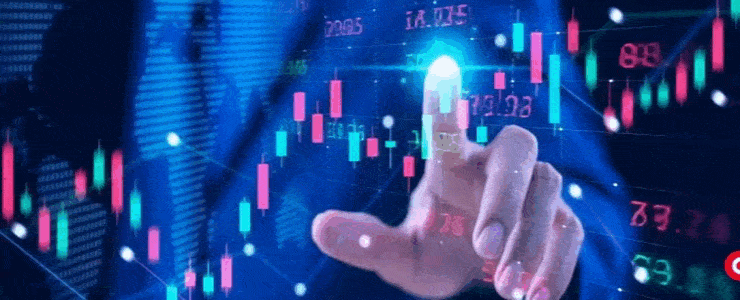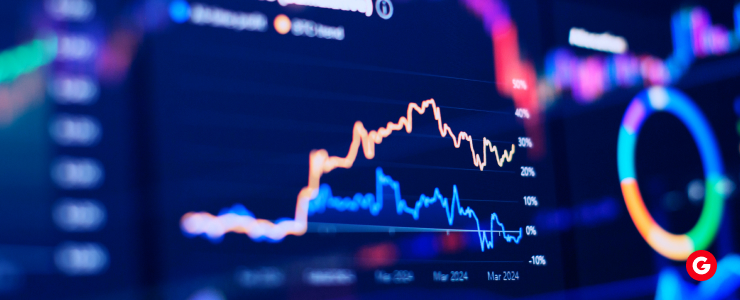Foreign exchange trading is an exciting venture, but it is not risk-free. The risk management failure causes the trader to lose money. The 1% Risk Rule is a very important rule that protects the traders’ capital and therefore minimizes losses.
According to the rule, a trader must not risk more than 1% of his or her trading account balance on one trade. It is a simple yet powerful plan that keeps investors in the business in the long run. In this article, we will come to know about what the 1% Risk Rule is, why it’s important, and how it influences forex trading.

What is the 1% Risk Rule?
The 1% Risk Rule is a risk management strategy used by professional forex traders. It suggests that the trader never risks more than 1% of the account balance on any one trade. For example, if a trader has an account balance of $10,000, they should not risk more than $100 on any one trade.
To calculate the 1% risk amount, use the following simple formula:
Account Balance × 0.01 = Maximum Risk per Trade
Major Reasons Why Forex Traders Need the 1% Risk Rule
Learning why the 1% Risk Rule is important can help traders remain in business for longer periods and make better-informed decisions.
1. Keeps Trading Capital intact
Most new traders have a bad tendency to risk big chunks of their accounts on one trade. This can result in huge losses. The 1% Risk Rule shields traders from losing a lot of money in the short term.
2. Encourages Consistent Growth
The success of Forex trading is achieved by the traders due to long-term growth. By risk management, the trader will be able to stay in the market for a longer period and increase their accounts in the long run. The concept allows the trader to focus on long-term achievement rather than instant money.
3. Eliminates Emotional Trading
When the traders risk too much, they make emotional trades due to either greed or fear. The 1% Risk Rule quiets the traders and keeps them masters of strategy, not emotion. A risk-managed strategy leads to more rational decisions and steers clear of impulsive trades.
4. Applicable for All Market Conditions
Forex markets are generally risky. Price action will blow out an account unless risk is controlled. The 1% Risk Rule stops winning and losing streaks from blowing out traders’ accounts in a financial crisis. Both in trending and range-bound markets, the rule gives stability to trading.
5. Makes Trading More Sustainable
Online trading needs to be treated as a business. Traders risk blowing their accounts on a line of losing trades if they fail to employ risk management. This rule guarantees long-term survival when trading the forex markets. A functional strategy allows traders to learn from mistakes and adapt their approach over the long term.

What Is the Impact of the 1% Risk Rule on Trades?
The 1% Risk Rule is a critical aspect in the growth of a trader’s long-term success through lessening losses and maximizing decision-making.
1. Increases Risk-to-Reward Ratio
The 1% Risk Rule traders are predisposed to such trades in which the risk-reward ratio is very significant. For example, risking $100, they seek to gain at least a profit of $200, thereby keeping the 1:2 ratio. It suits them to take their profits with live risks being minimal.
2. Prevents Massive Drawdowns
A trader who risks 10% per trade can lose 50% of their account in just five bad trades. Ten losing trades would deplete the account only by 10% under the 1% Risk Rule. This enables traders to recover from losing trades without jeopardizing their entire account.
3. Improves Decision-Making
The 1% Risk Rule traders are careful while entering a trade. They observe the forex market and don’t risk anything extra. This makes them more cautious and informed trading decisions.
4. Enhances Discipline and Strategy
After adopting a strict rule of risk management, the traders become more disciplined. They are compelled to stick to a planned scheme instead of speculation. Habitual risk management compels traders to adhere to their plans of trading and boost their winning rate.
5. Enables Trading on the Best Platforms
With a reliable trading platform like FXGiants, traders can make trades with ease while watching over risk management rules. Metatrader 4 (MT4) is a popular platform that is complemented by elaborate charting functionalities, automated trades, and top-notch risk management functionalities.

Conclusion
The 1% Risk Rule is amongst the most effective rules of forex trading. The rule helps investors protect their money, manage their emotions, and achieve long-term success. Not every trade is supposed to be profit-making—it must also be aimed at avoiding losses. If one adheres to this principle, investors can consistently build their accounts and stay within the market longer. Regardless of whether you use Metatrader 4 or other CFD trading software, proper risk control is important.
By following this rule, traders can trade without fear and with minimal setbacks. A self-disciplined approach to online trading allows traders to build their accounts step-by-step and become financially successful.
FAQs
1. Is the 1% Risk Rule for all traders?
Yes, it is for everyone from novices to professional traders. It ensures sustainable trading for everyone and protects against unexpected losses.
2. Can I raise my risk percentage?
Some experienced traders risk 2%, but anything more than that risks them huge losses. It’s always best to keep the risks at minimum levels for long-term gains.
3. How do I calculate 1% risk on my trade?
Multiply your total account balance by 1% (0.01). If your account has $5,000, your trade risk must be $50 at maximum. This way, even a sequence of losses will not affect your balance.
4. Does the 1% Risk Rule work for leveraged accounts?
Yes, despite the leverage, the 1% risk rule must be followed by the trader to avoid significant losses. Leverage is enhancing the size of profit but enhancing risks numerous times. Risk management must be used in trading in leverage.
5. Where can risk-managed safe trading occur?
Platforms like FXGiants integrate risk management aspects and online trading security. They provide access to MetaTrader 4, where traders can practically apply risk management concepts.
DISCLAIMER: This information is not considered investment advice or an investment recommendation, but is instead a marketing communication